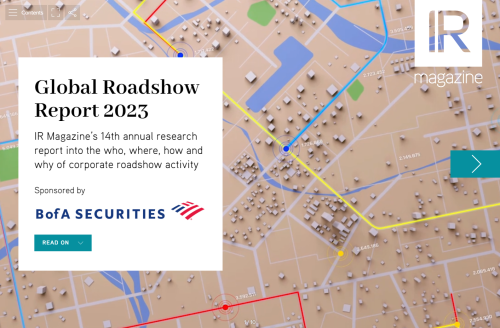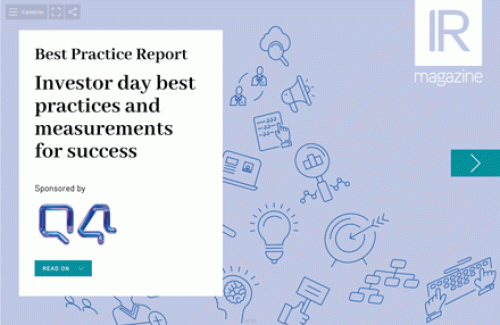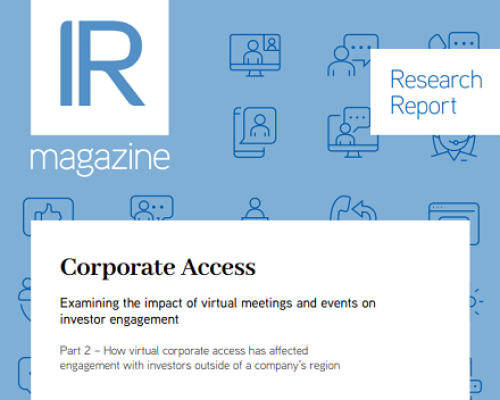Looking at Mifid II well over a year since its implementation, a number of themes have been highlighted by IR Magazine: the move toward Mifid II becoming a global standard, saving investors £1 bn ($1.3 bn) on research, and a fall in asset management research budgets.
IR Magazine has also explored what Mifid II means for consensus and further investigated the research narrative. But IR needs to keep in mind the rationale behind the introduction of Mifid II in the first place.
Michael Hufton, ingage managing director, tells IR Magazine that the historical context of why Mifid II was introduced should not be forgotten. ‘The key driver behind Mifid II was the sense that there was a fundamental, fatal flaw in prevailing market practice: research was being bought and consumed by fund managers, but paid for by the clients whose money they manage,’ he explains.
‘And those clients had no idea this was happening, or how much it was costing them – transaction costs were explicitly excluded from ongoing fund charges and even excluded from total expense ratios in the very frequent case that commissions were bundled into prices and spreads. So the aim here was to introduce transparency: end-investors would now know this was going on, and could happily fund that research consumption should they want to.’
The fact that the cost of research has largely been absorbed by buy-side profit and loss (P&L) accounts, and that the result has been a substantial cut in research expenditure proves that the reform was absolutely necessary, adds Hufton. ‘The regulatory requirement before was always to spend client money with at least as much care and diligence as you spent your own,’ he notes. ‘Yet the introduction of transparent pricing has resulted in a big fall in spend. This has to mean there was over-spend before.’
The second key point for Hufton is the transformation of the fund management industry and the relentless growth of passives, which now account for approximately one third of assets under management globally.
‘When passives just replicate the index, they have no need for research,’ he explains. ‘Research is a tool for active fund managers to help them outperform and generate alpha. Yet all the evidence shows that, in aggregate, they have been unable to do this. If, collectively, active fund managers have been unable to outperform indices net of fees over a period of decades, it calls into question precisely what this expensive research was for, and what exactly it achieved?’
But if investors aren’t being affected by the fall in research quality, then who is? ‘The sell side, clearly,’ says Hufton. ‘It’s having to do more for less.’
Vitally, this applies to corporates as well. ‘It is extremely clear that, increasingly, the corporate IR department is – and needs to be – the corporate’s eyes, ears and mouth in the marketplace,’ Hufton continues. ‘More and more needs to be done in-house. This causes constraints and requires increased budgets. But it’s right that this should happen.
‘In the old model, these sorts of benefits were provided free to the corporate – funded by end-investors, without those end-investors knowing they were bearing the cost or seeing any benefit from it.’
Hufton feels, therefore, that the financial marketplace needs to face a number of hard facts in regards to Mifid II. One, the cost of research has come down. Two, the cost of research is now largely borne by fund managers from their P&L, not from end-investors’ funds – so the cost of investing is falling. Three, in some cases the reduction in research volume ‘is a good thing [as] in many cases there has clearly been over-production,’ Hufton notes.
‘Four, all this expensive research doesn’t appear to have helped investors outperform – logically speaking the change should result in a fall in costs without a fall in performance – so it’s a good outcome for end-investors.’
Five, corporates often express concern about lack of research but – as Hufton observes – ‘frankly in some cases they should grow up a bit. If they find research useful, they can and should pay for it. They’ve been piggy-backing off investor-funded research for decades.
‘Six, if liquidity is an issue, maybe one answer is that exchange groups need to step up to the plate and provide or procure research for their listed companies as part of the package.
‘In the end, logically, if illiquidity and a paucity of research leads to severe mispricing opportunities, that offers fantastic opportunities for absolute money-making to active fund managers and astute, alert research analysts.’
All of which brings us back to the present and Mifid II. ‘Once the dust has settled, and things have bedded down, we may well end up with a much more dynamic and better-functioning market place,’ concludes Hufton.










